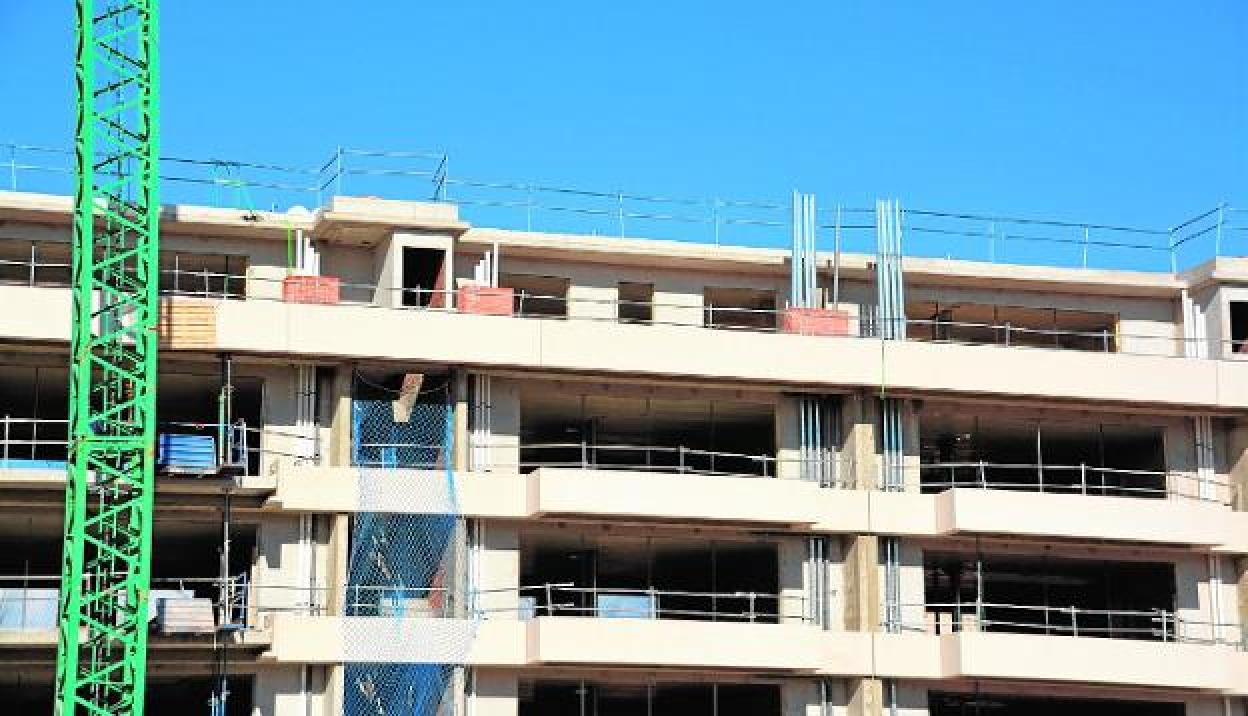Building permits rose by 12 per cent last year
Construction. The sector's recovery continues although new housing developments are still far behind pre-pandemic levels, says the College of Quantity Surveyors
ÁNGEL DE LOS RÍOS
Friday, 25 February 2022, 18:25
Statistics for 2021 issued by the Official College of Quantity Surveyors in Malaga province regarding permits issued and professional activity in the housing sector give a positive picture of new construction in the province.They show that work began on 5,792 housing units last year, which was 12.1 per cent more than in 2020.
"The data shows that there was growth during three consecutive quarters, and that confirms that the new housing sector is continuing to recover after the Covid crisis. Nevertheless, new developments are still well below pre-pandemic levels, with one third fewer units under construction last year than there were in 2019," said the College in a press release.
With regard to the whereabouts of these new homes, the majority of authorisations were for properties in Malaga city; permits were issued for 1,776 homes, and that accounted for 30.71% of the total.
The western Costa del Sol also stands out in terms of work beginning on new homes, with places such as Fuengirola (11.7%), Marbella (9.5%), Mijas (6.7%), Benalmádena (5.7%), Torremolinos (4.8%), Estepona (3.2%) and Benahavís (2.4%) showing the highest figures.
On the eastern coast of the province, in the Axarquía district, most of the work on new homes began in Vélez-Málaga (4.6%), Torrox (2.9%) and Rincón de la Victoria (2.4%) last year, while among the municipalities to the north of the province and other inland areas Alhaurín de la Torre and Cártama head the list, with 157 and 100 new homes respectively.
With regard to Malaga city, even though the number of new housing projects begun in 2021 was 2.5 per cent lower than the previous year, it appears that the pandemic is not having too much impact because the rate of new builds has remained similar to that of the past five years, around 1,800 units. In fact, last year it was even half a percentage point higher than in 2019, before the health crisis began.
The real picture
Unlike other data published on the evolution of the sector, such as plans presented for approval and licences granted, the information that the Colleges of Quantity Surveyors and Technical Architects supply to the Ministry of Public Works for its home building statistics are a direct reflection of the real situation in the housing sector because it shows how many certificates have been issued by these professionals for projects which are being carried out.
The work done by quantity surveyors enables analysts to ascertain with greater certainty when buildings are started and when they are completed, because the process involves a series of certifications and other paperwork.
The surveyors produced 17.4 per cent more reports, certificates, valuations and other technical documents last year compared with 2020, indicating at least a partial recovery in a sector which had been one of the worst affected by the pandemic.
The documents they draw up include reports after technical inspections of buildings have taken place, valuations of new properties, and reports on whether homes which are classified as having been built illegally can be made legal, among others.
Construction work on the rise
Apart from new homes being started and the other activities referred to here, the College also noted a general increase in the need for quantity surveyors and technical architects in other aspects of construction, as there were 11.4 per cent more commissions of these types in 2021 than there had been in the previous year.
Especially notable is the increased demand for project management for housing reforms and extensions, which went up by 8.31 per cent compared with 2020 and 12.41 per cent compared with 2019, while commissions for drawing up the plans for projects increased by 5.2 per cent to a total of 1,244. Of these, six out of every ten were for restoring or remodelling a property, something which has been on the increase in recent years.
"The lockdown and the increase in working from home because of the pandemic has meant that people have been spending more time in their homes, and that has contributed to a greater awareness of shortcomings and what we really need in our living spaces," said sources at the College of Quantity Surveyors.
This intensive use of the home has highlighted the importance of investing in maintaining and improving the place where, now, people spend most of their day, and it has led many families to think about refurbishing their homes and improving key elements which can enhance quality of life, such as thermal and acoustic insulation, ventilation, climatisation and lighting, and also, among other things, modernising them to make them more attractive and pleasant to spend time in.
On the other hand, the financial assistance and tax incentives of the EU's Next Generation Funds, which the authorities are now starting to put into circulation, are going to be very important in tackling the challenge of energy rehabilitation, a key aspect for sustainability, energy saving and improving the housing stock.
Quantity surveyors are essential in this field, because they can assess, advise, manage and direct these modifications.
